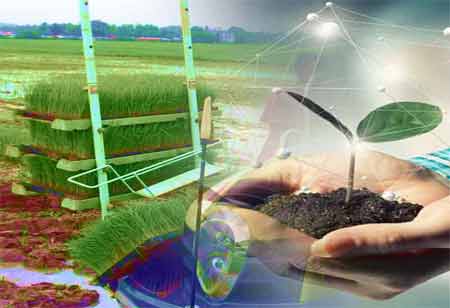Thank you for Subscribing to Agri Business Review Weekly Brief
Water Management: The Food Industry's Challenge
The food industry focuses on water management to prevent pollution and protect its reputation.

By
Agri Business Review | Thursday, February 01, 2024
Stay ahead of the industry with exclusive feature stories on the top companies, expert insights and the latest news delivered straight to your inbox. Subscribe today.
A working committee also recommends an investment tax credit for water reuse equipment. Meanwhile, other guidelines focus on potential volumes of reused water and offer distinct best practices.
Fremont, CA: The food industry focuses on water management to prevent pollution and protect its reputation. However, using treated wastewater in direct contact with food products is controversial due to public perceptions of cleanliness and safety. Instead, food manufacturers reuse treated wastewater in non-food-contact areas like landscaping and truck washing. Limited examples exist for reusing rainwater, but the industry must convince the public that treated wastewater can be processed to higher quality.
Challenges & Trends in Food Industry Water Management
Water Reuse
The U.S. Department of Agriculture has set sanitation performance standards for all meat and poultry establishments, allowing water reuse with proper monitoring and treatment. The U.S. Environmental Protection Agency (EPA) guidelines focus on municipal water reuse, with an updated edition including a section on prepared food manufacturing. The updated document describes water usage in processing facilities, opportunities for reuse, and technologies used. Some experts prefer federal government-developed rules with fair, uniform standards.
Treatment & Technology
Despite a lack of regulatory attention, food manufacturers are implementing various technologies to reduce water usage. These include measuring water ratios, monitoring usage, and developing strategies for minimizing usage. Common treatments include screening, grease capture, dissolved air flotation, primary clarifiers, pH adjustments, and lagoons. Other measures include pH neutralization and flow equalization technologies, crop irrigation, cooling towers, and anaerobic lagoons.
Uncommon Exception
Few animal slaughtering and meat processing manufacturers have adopted membrane bio-reactor (MBR) technology, which can help achieve near-net zero waste discharge in food production facilities. Treatment methods include biological nutrient removal, water treatment with granular activated carbon, ultraviolet light disinfection, and reverse osmosis filtration. However, these schemes are unlikely to be widely adopted, and food producers will likely adjust their operations based on their circumstances.
Standards & Consistency
The food manufacturing industry and other water stakeholders are establishing voluntary guidelines for water reuse. Some have conducted planning workshops, organized studies, and encouraged sustainable practices. These enterprises promote the benefits of water reuse and have advocated for legislation to eliminate the cap on private activity bonds. A working committee also recommends an investment tax credit for water reuse equipment. Meanwhile, other guidelines focus on potential volumes of reused water and offer distinct best practices.





